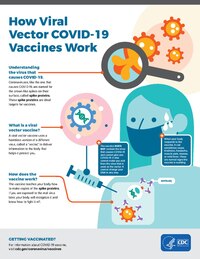
Photo from wikipedia
We are pleased to publish a Thematic issue of Virus Genes entitled ‘‘From virus to vector to medicine.’’ This special study provides an overview of viruses which were utilized as… Click to show full abstract
We are pleased to publish a Thematic issue of Virus Genes entitled ‘‘From virus to vector to medicine.’’ This special study provides an overview of viruses which were utilized as medical products by converting them into vectors (see also Fig. 1). These virus-based vectors are used in gene therapeutic approaches as transport vehicle to insert recombinant therapeutic nucleic acids into the desired target cell or as oncolytic agent to treat a broad variety of different diseases. While it had been proposed already long ago, this basic concept represents a modern field of molecular medicine today. Especially during the past decade the field of gene therapy started to thrive and researchers from different disciplines developed novel and innovative treatment options for patients suffering from devastating and often life-threatening diseases. Clinical studies included, for instance, gene therapeutic treatment of patients suffering from severe-combined immune-deficiencies (SCID), hemophilia B, Leber’s congenital amauroses (LCA), adrenoleukodystrophy (ALD), Sickle cell disease, and Wiskott Aldrich syndrome (WAS). In 2012, the European Medicines Agency approved the first gene therapeutic drug in Europe: Glybera, a virus vector treating lipoprotein lipase deficiency (LPLD). Up to date more than 2000 gene therapeutic clinical trials worldwide have been performed. Notably, these exciting studies were only rendered possible because ground breaking work in basic virology research as well as translational studies in preclinical in vitro and in vivo models. Initially, the principle of gene therapy sounded simple because the idea was to utilize genetically modified viruses in which certain viral genes were deleted and replaced by a therapeutic nucleic acid. These recombinant viruses can then be used as vectors to deliver the therapeutic cargo efficiently into affected target cells or unaffected organs that serve as protein production sites. However, especially two clinical trials performed in 1999 and one which was started in 2000 aiming at treating patients suffering from ornithine transcarbamoylase deficiency (OTC) and SCID, respectively, clearly revealed limitations of viruses used as transfer vehicles for gene therapeutic approaches. With these fundamental studies it became clear that the virusbased vector itself was majorly involved in two drawbacks: & Florian Kreppel [email protected]
Journal Title: Virus Genes
Year Published: 2017
Link to full text (if available)
Share on Social Media: Sign Up to like & get
recommendations!